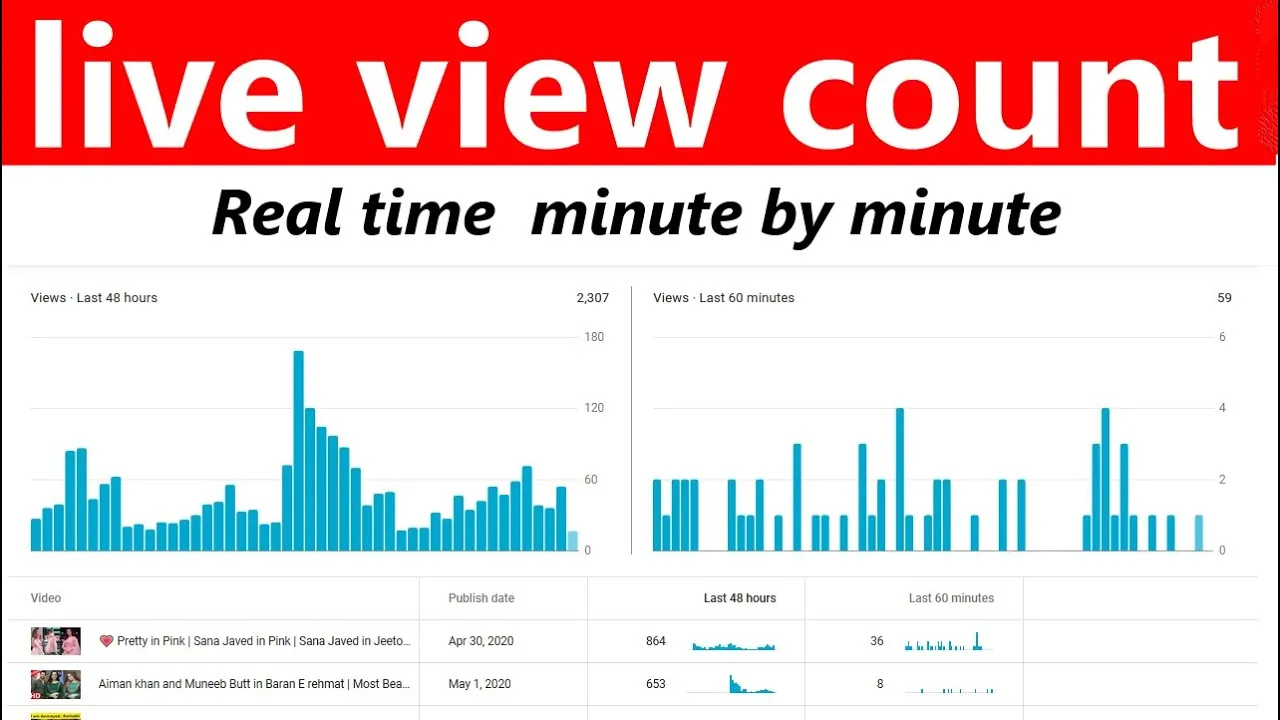Ever wondered if watching your own YouTube videos counts as a view? You're not alone! Many creators question this as they look to boost their view counts and engage their audiences. In this blog post, we’ll dive into the intricacies of YouTube views, exploring what counts and what doesn’t, so you can make the most of your content creation journey.
Understanding YouTube Views

YouTube views are crucial for creators seeking to grow their channels and engage with their audience. A view is counted when a user watches a video for a minimum of 30 seconds. However, the way views are tracked has some fascinating nuances:
- Unique Views vs. Total Views: YouTube distinguishes between unique views from different users and total views, which can include multiple views from the same user. This means that if you watch your own video multiple times, it may not always count as multiple views.
- Refresh and Re-watch: If you refresh the video or re-watch it too soon, YouTube’s algorithms may not count that view. They aim to ensure that views are from genuine engagement.
- Incentives for Engagement: YouTube encourages creators to cultivate an audience rather than inflate numbers through self-views. This means investing time in promoting your content and engaging with your community.
So, while those early views from your own watch might contribute to your overall performance, it's crucial to focus on building a genuine audience. Engaging with your viewers through comments, social media, and live streams will not only increase your views more effectively but also create a loyal fan base.
Also Read This: Understanding Vibration Features of Nintendo Switch Lite
The Criteria for Counting a View

When it comes to YouTube, not all views are created equal. Understanding the criteria that define a view is crucial for anyone looking to grow their channel. So, what exactly counts as a view? Here’s a breakdown:
- Duration: A view is counted when a user watches a video for a minimum of 30 seconds. This means if they click on your video but click away within that period, it won't count.
- Unique Viewers: YouTube employs sophisticated algorithms to differentiate between unique and repeat views. This means that if the same person watches your video multiple times in a short period, only one of those views might be counted in terms of unique engagement.
- Playback Method: Views counted from official YouTube apps and websites are valid. Third-party websites or apps may not contribute to your view count accurately.
- No Bots: YouTube actively combats spam and bot traffic. If a view is generated through automated systems, it will likely be filtered out.
Ultimately, being genuine and focusing on quality content will help you gain real views that matter, rather than trying to game the system.
Also Read This: Understanding Why Scammers Favor Telegram for Their Schemes
Self-Views: What You Need to Know
Now, let’s talk about self-views—watching your own videos. You might wonder, “Do my own views contribute to my total?” The answer is a bit nuanced:
In general, when you watch your own video, it may count as a view, but there are a few caveats:
- Frequency: If you repeatedly watch your video in a short time frame, YouTube's algorithm is likely to filter those out as spam.
- Engagement: If you engage with the video (like or comment), it might have a more positive effect on your video's visibility in the algorithm.
- Analytics Impact: Watching your own content can skew your analytics data. It’s essential to keep this in mind when assessing your video’s performance.
So, while it's okay to check your work, remember that the focus should be on attracting an audience that genuinely enjoys your content. Your goal should always be to build a community rather than inflating numbers!
Also Read This: Canva Image Curve Adjustment
Implications for Content Creators
As a content creator, understanding how views are counted on platforms like YouTube is essential for your growth strategy. When you watch your own videos, it might feel like you're boosting your view count, but in reality, YouTube has measures in place to prevent this from artificially inflating metrics. Here are a few key implications to consider:
- Authenticity Matters: YouTube's algorithms are designed to promote authentic interactions. If you’re constantly watching your own videos to increase views, it could backfire. YouTube may flag your account for suspicious activity, which can impact your channel’s credibility.
- Engagement over Views: Instead of focusing solely on the number of views, concentrate on enhancing viewer engagement. Comments, likes, and shares are indicators of appreciation and can improve your video’s ranking.
- Analytics Insights: Regularly check your YouTube Analytics. It provides insights into your audience's behavior, such as watch time and retention rates, which are far more valuable than just view counts.
In summary, while watching your own videos doesn’t count as a legitimate view, understanding this can help you focus on creating quality content that resonates with your audience.
Also Read This: Understanding LinkedIn Post Character Limits
Best Practices for Increasing Genuine Views
If you’re looking to boost your genuine views on YouTube, here are some best practices that can help you reach a wider audience:
- Create Compelling Thumbnails: Thumbnails are the first impression of your video. An eye-catching thumbnail can significantly increase your click-through rate.
- Optimize Your Titles and Descriptions: Use relevant keywords in your titles and descriptions. This will help users find your video through search queries.
- Engage with Your Audience: Respond to comments and engage with viewers. This not only builds a community but also encourages viewers to return to your content.
- Promote on Social Media: Share your videos on platforms like Instagram, Twitter, and Facebook. Tailor your message for each platform to capture the interest of different audiences.
- Collaborate with Other Creators: Partnering with other YouTubers can expose your channel to a new audience, increasing your potential views.
By implementing these strategies, you can foster a loyal viewership and increase your chances of generating genuine views on your YouTube channel.
Does Watching Your Own YouTube Video Count as a View?
As a content creator on YouTube, understanding how views are counted is crucial for optimizing your channel's performance. One common question that arises is whether watching your own videos contributes to the view count. The answer, in short, is yes, but with specific caveats.
YouTube's algorithm is designed to ensure that views reflect genuine engagement. Here are some key points regarding your own views:
- Initial Views: When you watch your own video, it will typically count as a view, provided that you meet certain criteria.
- View Duration: You need to watch the video for a substantial amount of time. If you click on the video and immediately click away, it might not count.
- IP Address and Cookies: YouTube tracks views through IP addresses and cookies. If you repeatedly watch your own video from the same device, it may not count all instances as separate views.
- Engagement Metrics: YouTube is more likely to recognize your view if you actively engage with the video by liking, commenting, or sharing it.
Furthermore, YouTube employs algorithms to filter out what it considers artificial engagement. If the platform detects suspicious activity, such as repeatedly refreshing a video to inflate views, it may disregard those views altogether.
| Criteria | Effect on View Count |
|---|---|
| Watch Duration | Counts if sufficiently long |
| Repeated Views | May not count all |
| Engagement (likes/comments) | Increases legitimacy |
In conclusion, watching your own YouTube video can count as a view, but it is essential to engage meaningfully with the content to ensure that it is recognized as such by YouTube's algorithms. Genuine interaction enhances your video's visibility and overall performance on the platform.